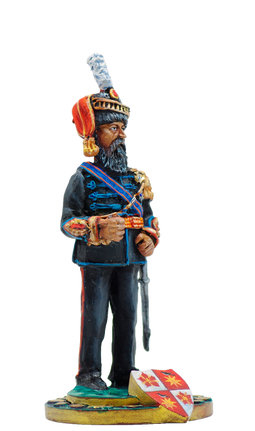
Ernest
Count of Lippe-Biesterfeld
Ernst, Count of Lippe-Biesterfeld (Ernst Kasimir Friedrich Karl Eberhard; 9 June 1842 – 26 September 1904) was the head of the Lippe-Biesterfeld line of the House of Lippe. From 1897 until his death he was the regent of the Principality of Lippe. He was born in Oberkassel the third child of Julius, Count of Lippe-Biesterfeld (1812–1884) and Countess Adelheid of Castell-Castell (1818–1900). On 17 May 1884 Count Ernst succeeded his father as the head of Lippe-Biesterfeld line of the House of Lippe. After the reigning Princes of Lippe, Biesterfeld was the most senior line of the princely house followed by the Counts of Lippe-Weissenfeld and the Princes of Schaumburg-Lippe. On 20 March 1895 the reigning prince of Lippe, Prince Woldemar died childless. His heir was his brother Alexander who was incapable of ruling on account of a mental illness so a regency had to be established. A decree had been issued in 1890 by the late Prince Woldemar and though kept secret until his death it resulted in Prince Adolf of Schaumburg-Lippe, the brother in law of the German Emperor William II and not Count Ernst being appointed regent. This act was disputed by Count Ernst who put forward a claim to the regency. Lippe's diet confirmed Prince Adolf as regent on 24 April pending a settlement over the right to the Lippe regency. A settlement was reached in 1897

when a commission under the presidency of King Albert of Saxony ruled in favour of the claims of Count Ernst. Prince Adolf then resigned the regency and was replaced by Count Ernst. Ernst remained as regent until his death in Schloss Lopshorn at which point his son Leopold succeeded him as head of the Lippe-Biesterfeld line and regent, before becoming the reigning Prince of Lippe four months later on the death of Prince Alexander.

The Corps de Maréchaussée was created by King William I to replace the French Gendarmerie on 26 October 1814. The word gendarmerie had gained a negative connotation, so William called the new force "marechaussée" (he forgot the first acute accent in the document). Maréchaussée is an alternate French word for gendarmerie. In the French historical context, "Maréchaussée" had been the force's name under the Royal Ancien Regime, while the term "gendarmerie" had been adopted by the French Revolution - making the Royalist term preferable for the Dutch King. At that time, the Marechaussee was a part of the army (landmacht). The Marechaussee was tasked with maintaining public order, law enforcement, and safeguarding the main roads. Although not specifically mentioned, this included police duties for the army. As such, the Marechaussee was part of the national police (rijkspolitie). The Marechaussee was the only police force in many small municipalities, such as Venlo, especially in the southern provinces of Limburg and North Brabant (former Generality Lands). In 1908, Queen Wilhelmina assigned the Marechaussee the task of guarding the royal palaces, which had previously been done by gardeners. To this day, guarding a palace is called "klompendienst" (clog service).

The House of Lippe descends from Jodocus Herman, Lord of Lippe (died c. 1096), whose descendant Bernhard I was the founder of the state of Lippe in 1123. Born ca 1090. The family has produced several of the longest-reigning monarchs in Europe, including the longest reigning (for 82 years), Bernard VII, Lord of Lippe (d. 1511). In 1528, Simon V was elevated to the rank of a ruling count of the Holy Roman Empire. In 1613, the House's territory was split into the counties of Lippe-Detmold, Lippe-Brake and Lippe-Alverdissen. In 1643, Count Philipp of Lippe-Alverdissen inherited half of the neighboring County of Schaumburg and founded the Schaumburg-Lippe line of the House of Lippe. The Brake branch extinguished in 1709, disputedly inherited by the main, Lippe-Detmold line. Alverdissen was bought back from Schaumburg-Lippe by Lippe-Detmold in 1812. In the 18th century, the cadet line of Lippe-Biesterfeld split from the Detmold branch, and shortly thereafter Lippe-Weissenfeld split from Lippe-Biesterfeld as a further cadet branch. Both, Biesterfeld and Weissenfeld were so-called paragiums
(non-sovereign estates of a cadet-branch) within the County of Lippe. Both branches, owning only modest manor houses in the county, acquired other (non-sovereign) property by marriage and moved out of the county in the late 18th century, the Biesterfeld branch to the Rhineland, and the Weissenfeld branch to Saxony. The counts of Lippe-Detmold were granted the title of Imperial prince in 1789, while the counts of Schaumburg-Lippe became in fact princes by entering the Confederation of the Rhine in 1807 and legally by becoming a member state of the German Confederation in 1815. The Principality of Lippe existed until the end of the German monarchies in 1918.

Standard of the Prince Consort of the Netherlands. A quadrangle bearing an orange cross. First and third quarters in Nassau blue, adorned by the Dutch Lion from the national coat of arms. Second and fourth quarters are Azure, adorned by a griffin passant Or langed Gules of the House of Mecklenburg. Centered upon the cross is the coat of arms of The Netherlands, topped by a royal crown.
Awards: Insignia and star of the Princely Cross of Honour of Lippe (Fürstlich-Lippisches Ehrenkreuz), Sash and star of the Order of the Netherlands Lion (De Orde van de Nederlandse Leeuw).










